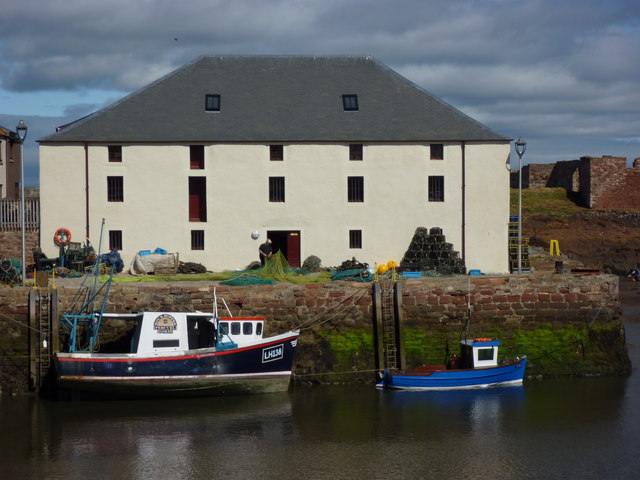Maritime archaeologist Dr Dan Atkinson, currently Director of Coastal and Marine with Wessex Archaeology, introduced us to the fascinating topic of old ships’ timbers, the ways in which they were recycled both in ship repair and in the construction of buildings, and what they could tell us about the ships they came from. He set the scene with a shipright’s workshop at Chatham where an archaeological survey had revealed a layer of ship’s timbers under the existing floor. Even more interesting was the story of the Chesapeake, an American vessel captured by the British which, after service with the Royal Navy, was broken up around 1820 and the timbers used in the construction of the Chesapeake Mill in Wickham, Hants. The width of the building was constrained by the length of the ship’s decking timbers used for the floor, with the result that the frontage reflects the original width of the Chesapeake.
Turning to Dunbar, MacArthur’s Store, next to the Cromwell Harbour, was subject to archaeological survey as part of a restoration project by Dunbar Harbour Trust. The original building was constructed in the late 1650s and was used as a granary (Spott’s Girnell) and for other purposes later. Around 1800 the floors, of what had become a building of three stories, were strengthened by the insertion of vertical props. The props were recycled ship’s timbers which, documentary investigation suggested, came from a particular 18th century Scottish merchant ship. They are a very rare survival, probably the only ones in Scotland from that period of history.
Dan took us through some of the features of some of the props which allowed their position in the ship’s decking to be inferred. With others, he showed how mast sections could be identified from, for example the positions of metal collars (long gone) and evidence of various wooden additions, wedges for example.
Work which remains to be done includes dendrochronology to determine the age of the wood in the timbers, which would make it possible to deduce when the parent trees were felled. This could relate to the date at which the original merchant ship was constructed. There is also some recently discovered (rediscovered!) documentary evidence relating to the building work at MacArthur’s Store in the early 19th century still to be closely studied. Dan brought along the original for us to see.
Peter R
